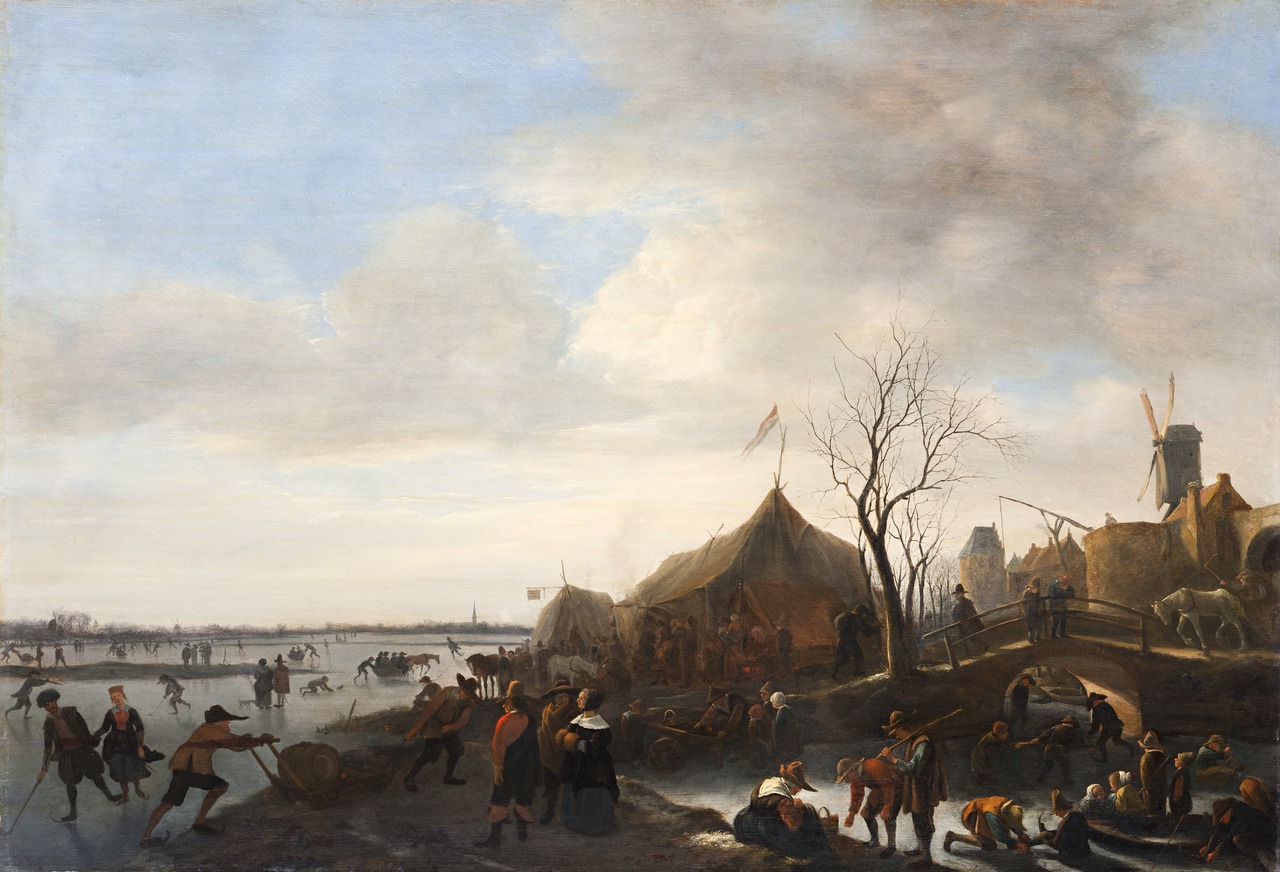At first I was having some trouble finding a painter who’s work resonated with me thematically, beyond appreciating them from a technical standpoint.

Self- Portrait playing the Lute 1663 – 1665
However, the work of Jan Steen ended up being a hugely pleasant surprise in the midst of so much portrait work and religious imagery.
The son of a brewer and a tavern keeper himself in his old age after the Year of Disaster disrupted the art market in the Netherlands, his work had an immediate resonance with me and had a unique quality and charm that I found intensely appealing.
Though he did certainly paint those, a good many of his compositions eschew grandiose biblical themes and instead opt to show candid depictions of life, from intimate family scenes to pastoral peasantry landscapes (not unlike Pieter Bruegel the Elder from the previous century). Additionally, I his self-portraits come off as honest and without artifice. He approaches them without self-flattery, and they come off as very genuine and wry.
He also manages to put so much detailed personality, forethought and charm into his compositions that after seeing them blind, then revisiting them with additional background information (such as in The Feast of Saint Nicholas, 1665–1668) I’m delighted at how many small things begin to pop out as storytelling elements with new meaning.
In the latter painting in particular, at first glance it’s a Dutch Christmas scene oozing with detail and charm, but when you start picking into the smaller elements the painting begins to continuously unfold.

The Feast of St. Nicholas – Detail
Every character is an active actor driving the narrative in scene; the young boy is pointing, making eye contact with the viewer and laughing at the older boy receiving a shoe filled with birch switches (used for swatting unruly children!) as lighthearted punishment for his poor behaviour. The grandmother mischievously beckons him over to where she has perhaps found a better present lurking beyond the curtain. Meanwhile, the family members on the far right are staring up the chimney, waiting for St Nicholas to drop presents down the chute. These are only a handful of the neat details in this particular painting that brings a simple family scene to an entirely different level of life.

Winter Scene, 1650. The faint orange haze touching the clouds lending a gorgeous warmth to what would be a typically frigid subject.
Indeed, his works were so lively and cluttered he even had a dutch proverb attributed to him, with “een huishouden van Jan Steen” coming to mean a scene that was messy or cluttered!

The Drawing Lesson, 1665, showing a very “huishouden van Jan Steen”
The Bowling Game, 1655. Showing not only an interesting story, but beautifully soft landscape painting.
Sourcing:
https://www.museothyssen.org/en/collection/artists/steen-jan-havicksz/self-portrait-playing-lute
Century Magazine, Volume 47, Issue 2 (December, 1893)Old Dutch Masters. Jan Steen

Leave a Reply